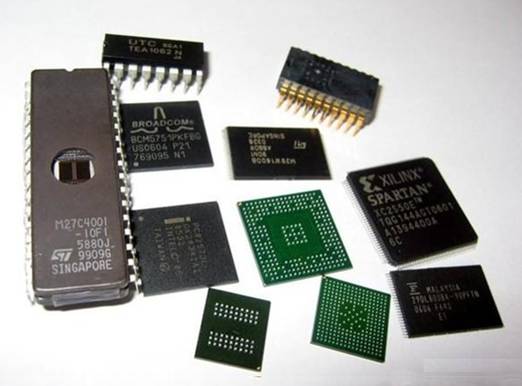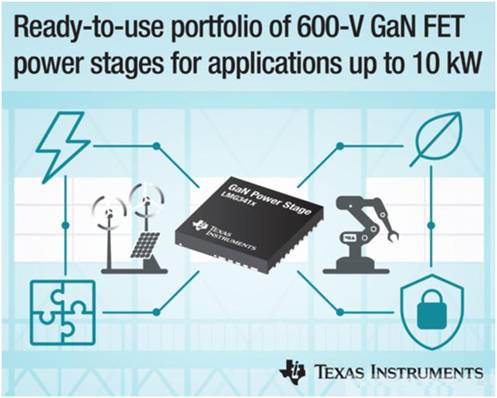"Evolution" of power management ICs
Although the power management IC is not that eye-catching as the CPU and GPU, it belongs to a relatively stable market. If it can be cultivated in this field, it can also cultivate its own "one-acre three-point land." After all, power management ICs are indispensable.

1.Application change
For power management ICs, "evolution" is a constant appeal for both traditional and emerging applications.
Mark Gary, vice president of Texas Instruments and general manager of the step-down switching power supply business unit, believes that consumer-oriented products such as notebooks, mobile phones and wearable products require smaller power supplies and larger power to accommodate smaller devices. Demand for fast and fast charging. In the data center and industry 4.0 fields, high-power requirements for power management ICs require higher efficiency and better EMI performance.
For example, in the case of server applications, if you want to implement cloud computing, you have to have more processing power. How to attain more power in a fixed space, from several kilowatts to 30kW, etc. This is the power management IC. What needs to be dealt with.
Liang Zaixin, Marketing Director of ADI Power Products China, said that the power management IC of Industry 4.0 focuses on flexibility, efficiency, low EMI, safety, reliability, etc. In the field of autonomous vehicles, the key platforms are mainly laser radar and millimeter wave radar. Etc., the requirements for noise and security are high; in the field of communications, the biggest challenge for the upcoming 5G revolution is the way to improve power conversion efficiency.
From the perspective of market demand, some analysts said that the communication market will occupy the most important market share, and the upcoming large-scale 5G layout will further enhance the demand for power management chips in the communications field. At the same time, automotive electrification and industrial, 4.0 upgrades will also become a booster for power management chips. Relatively speaking, consumer and computing applications have decreased.
2.Module "fast forward"
The integration, modularization, and intelligence of power management ICs has always been the driving force for advancement, and modularization is emerging under the interaction of internal and external factors.
Mark Gary mentioned that there are two major drivers for the development of power modules. One is introduced of new processes. By integrating passive components such as inductors, capacitors, resistors, etc., the size is reduced and the power is raised. Second, the package is improved. And innovation, many packaging processes used wire-bonding technology 4-5 years ago, and now use flip-chip technology, resulting in higher power density and further improvement in EMI.
This not only gives the power module high EMI resistance, high-power density, and more reliability, Mark Gary also pointed out that the power module not only has a smaller overall size, but also has simpler peripheral requirements and does not require more passive components. The number is decreasing. In addition, product development will be more convenient for engineers and will speed up the listing process.
However, the obstacles to the marketization of the module due to the high cost have been further eliminated. “With the advance of technology and technology, the price difference between power modules and discrete devices has shrunk. The price of power modules was 4-5 times that of discrete devices four or five years ago, and now it is 1.8-1.9 time. From the perspective of cost performance, engineers think The development of power modules is more opportune, and the reduction of peripheral devices can further reduce the cost, so the market potential can be expected.” Mark Gary is very concerned about the progress of power modules. “In the test and measurement, medical instruments, industrial automation, etc., need small size, EMI advantages. Power modules are available for all applications."
TI's latest power module LMZM33606 can be deemed to be born born from time to time. When Mark Gary introduced his merits, he said that the EMI characteristics are excellent. Because the module has integrated capacitors, the current loop can be made smaller to meet various EMI standards. Second, the power density is greater. Third, WEBENCH makes the design simple. WEBENCH supports online design. Simply set the input and output parameters into WEBENCH, you can calculate the required capacitance and resistance.
3.GaN batch
In the power management IC market, the limits of habitual "silicon" materials are the inability to output higher power at the required frequency under existing size specifications. In applications such as 5G and data centers, power is an essential factor. In this case, gallium nitride (GaN), which delivers the same power under conditions of half the size and energy consumption, has emerged.
According to Steve Tom, Product Line Manager, Gallium Nitride (GaN) Power Devices, TI's High Voltage Power Applications Business Unit, increasing frequency makes volume reduction a significant advantage of GaN, which significantly reduces the size of transformers, inductors, and capacitors. In the traditional voltage design, the 600V input is generally only 100kHz, the transformer volume will be very large, and the overall weight is also greater than 650g. TI's GaN products have a frequency of up to 1MHz, which is 10 times that of the customary frequency. Therefore, the size of the inductor and capacitor can decrease by 10 times.
Regardless of the fact that GaN is more expensive than silicon, market acceptance is improving in three ways. Steve Tom analyzed that, as the market matures and more and more customers are utilising it, the overall price trend of GaN is lower. Second, the frequency of GaN can reach 1MHz compared with traditional silicon. The external inductor and capacitor size can be Being smaller. It also means cheaper, so the price is more acceptable from the overall system; third is the new process and packaging technology, making the cost also lower. Compared to another rookie SiC (silicon carbide), GaN can run to 1MHz, SiC frequency can only reach several hundred kHz, it is simpler and lower cost for high-power application of GaN.
Steve Tom also mentioned: "The GaN products will be the first to be used in high power applications in some industries and new energy sources, and the price trend will extend to the consumer market."
For the reliability of GaN, Steve Tom specifically stated that TI has performed 20 million hours of full reliability testing on the new ready-to-use 600V GaN GaN LMG341x supporting up to 10kW applications, including high Low temperature testing, overcurrent testing, etc., so reliability is a strong guarantee. In addition, the GaN device doubles power density and reduces losses by 80%, enabling not only a smaller, more efficient solution, but also a further simplification of the design.

“We are confident that GaN processes, technologies and products are ready for mass production.” Steve Tom is confident. At present, TI's official website not only provides reference designs, but also provides PCB layout, technical documentation and development tools. In addition to the new WEBENCH tools, TI also works with the original authors of Power Design Basics to translate them into Chinese, allowing customers to learn more powerful knowledge and more convenient selection and design to speed time to market. Process. Steve Tom finally stressed that TI will continue to invest in GaN products, and future products will continue to improve in integration and overvoltage and overcurrent protection, and progress will be easier.






















